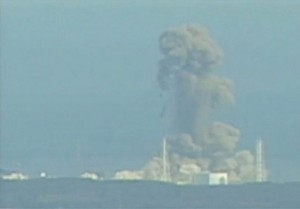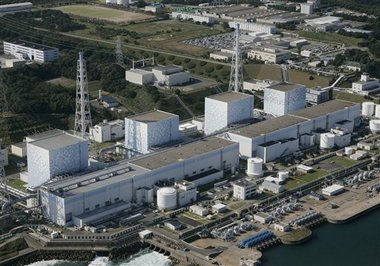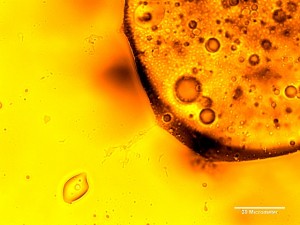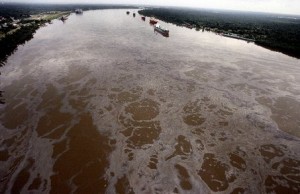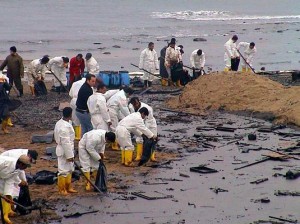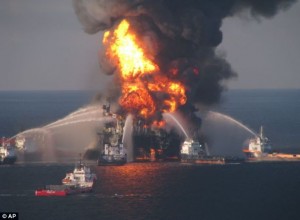NY Times Special (Business As Usual) Energy Section
Clifford Krauss’ “Can We Do Without the Mideast?” sets the tone for the “Special Energy Section” in the NY Times, March 31, 2011. “The path to independence – or at least an end to dependence on the Mideast – could well be dirty, expensive and politically explosive.” Is this an April Fool’s Day joke? The path to sustainable energy requires vision and hard work. a solar array on every roof and insulation in every wall and every attic. It will be better for the economy, better for the environment, and better for ourselves, our children, and our grandchildren. Continue reading
Category Archives: Environmental Catastrophe
Nuclear Power: What Future?
The men and women who design, build, and work at nuclear power plants are bright, dedicated people who work hard so that when we flip a switch the power flows, so we can use our computers, watch our tvs, refrigerate our food, microwave our dinners and our popcorn, heat, cool, and vacuum our homes, and jam on our electric pianos and electric guitars when we want to. The drive, dedication and service of the engineers at Fukushima is heroic.
Under normal conditions, nuclear power emits less pollutants than coal, and the waste from nuclear power is regulated. The wastes from coal are not.
Yet, radioactive materials are an intrinsic property of nuclear power; consequently meltdown and disaster are inherent dangers. The disasters at Fukushima Dai-ichi, Fukushima Diaini, and Onagawa, while not predictable, were not unexpected. We’ve seen Chernobyl in ’86, Three Mile Island in ’79. We’ve had fires at Brown’s Ferry. We have had, and continue to have leaks of radioactive material at Oyster Creek, Indian Point, Vermont Yankee, the Hanford Nuclear Reservation and every other nuclear facility in the United States, Japan, France, and I am sure, the rest of the world.
And we learned what? To ‘harden’ the plants? To spare no expense in a fanatical devotion to safety and maintenance?
No. To cut corners and to defer maintenance. To extend to 60 years the life of plants designed to last 40 years.
Eric Mack/CNET: Crowdsourced Radiation Tracking
It’s becoming increasingly clear that, as the dispersal of radiation becomes the most pressing question, distributed and redundant radiation detection (as well as wind-speed and wind direction) is what’s called for. Perhaps radiation detectors with IP addresses, or which can be connected to smart phones.
And Sahana – the free and open source software which is becoming the international standard for managing disaster response. seems an ideal platform for posting and sharing this type of information at many intervals, from many nodes, all geo-tagged.
Here’s Eric Mack’s From Tokyo to California, radiation tracking gets crowdsourced, published on CNet News.
The intensifying nuclear crisis in Japan is raising anxieties on both sides of the Pacific over the potential impacts of radiation exposure, and a relative dearth of official information on radiation levels is leading some to turn to crowdsourced options.
Japanese officials warned residents living near the Fukushima Daiichi nuclear power plant to stay indoors after a third explosion at the plant in four days, followed by elevated radiation levels around the plant, which the officials said were high enough to harm human health. Panic was reported in Tokyo, as radiation levels rose to as much as 23 times the normal level, according to some reports.
With official estimations of the threat from radiation across Japan changing rapidly and sometimes inconsistent, a number of real-time amateur radiation monitors have popped up online. A live geiger counter at altTokyo.com updates a graph with data every 60 seconds, and a uStream channel broadcasting the digital display of another Tokyo geiger counter was drawing more than 14,000 viewers earlier today.
A few thousand miles across the Pacific to the east, state and federal officials in Hawaii and West Coast states said they did not anticipate any threats to public health from radiation drifting in from Japan. Despite such reassurances, Arizona-based GeigerCounters.com is seeing a run on radiation monitoring equipment. The site was down for a while following the announcement of the Fukushima leak, and came back online this morning with this message:
Due to the disaster in Japan, orders for Geiger Counters have outstripped supply. Initial orders were filled immediately from stock on the shelves at our location and the warehouses of our suppliers. But at this point, there are simply not enough detectors available to meet the overwhelming demand. At least one of our suppliers has adopted a “triage” method of doling out the limited supply of detectors remaining until more can come off the factory line.
Is Fukushima Dai-ichi Worse than Chernobyl?
Are there differences between Fukushima Dai-ichi and Chernobyl?
And is Fukushima worse than Chernobyl?
A teenager might say “Du-uh!”
My friends from Brooklyn might ask “Is the Pope Catholic?”
Even “Snooki” and “The Situation” might ask “Are you stoopid or what?”
But the people at CNN, ProPublica and the NY Times are asking nuclear power industry experts. That’s like asking Charlie Sheen if cocaine is bad, or asking Lindsay Lohan if she really stole that necklace. They should be asking people like Amory Lovins at the Rocky Mountain Institute, Roger Saillant at Case Western’s Fowler Center for Sustainable Value, Jeremy Grantham at GMO, Cary Krosinsky at Columbia University CERC, anyone connected with academic programs in Sustainability, such as at Marlboro College, the Presidio, Bainbridge, ecological economics, systems dynamics, etc.
So for the record – here are six real differences (as opposed to the nonsense at Pro Publica here and here) and two major points of congruence.
Fukushima: Worse than Chernobyl?
This seems to be worse than Chernobyl. Chernobyl was a meltdown at one reactor. There are reports of “partial melt-downs” at three reactors at Fukushima Dai-Ichi and “States of Emergency” at 9 out of 17 reactors at three sites northeast of Tokyo: 3 at Fukushima Dai-ichi, 3 at Fukushima Daini and 3 at Onagawa. I expect the others at Dai-ichi to be shut down.
“The chairman of the United States Nuclear Regulatory Commission gave a far bleaker appraisal on Wednesday of the threat posed by Japan’s nuclear crisis than the Japanese government had offered. He said American officials believed that the damage to at least one crippled reactor was much more serious than Tokyo had acknowledged, and he advised Americans to stay much farther away from the plant than the perimeter established by Japanese authorities.
“The announcement opened a new and ominous chapter in the five-day-long effort by Japanese engineers to bring the six side-by-side reactors under control after their cooling systems were knocked out by an earthquake and a tsunami last Friday.”
– David Sanger, Matthew Wald, and Hiroko Tabuchi, NY Times, “U.S. Calls Radiation ‘Extremely High,’ Sees Japan Nuclear Crisis Worsening
Also in the NY Times, William Broad reports “Scientists Project Path of Radiation Plume” … “A United Nations forecast of the possible movement of the radioactive plume coming from crippled Japanese reactors shows it churning across the Pacific and touching the Aleutian Islands on Thursday before hitting Southern California late Friday [March 18, 2011].”
It is important to remember that this is not just radiation, but particles carried on the wind that are emitting radiation.
Buy iodine. It may be bad for your blood pressure, but then again so are meltdowns, even those half-a-world away.
The damage to north-east Japan is not incalculable. A small number of people were killed. A large number of cancers will develop. A significant percentage of Japan’s electric capacity – 9 out of 17 nuclear power plants – is down. An area of 2,826 to 7,850 square miles – a radius of 30 to 50 miles – around Fukushima Daiichi must be closed. Radioactive material is flushed from the damaged reactors into the Pacific. The heavy metals will sink to the ocean floor and eventually get buried in sediments. This will be bad for fish, dolphins, etc., however, there will be no humans there to fish …
Three questions: Indian Point, Oyster Creek, and Vermont Yankee are of the same design as Fukushima Daiichi. Why did the NRC just relicense Vermont Yankee? Why does the NRC not pull the licenses from Oyster Creek and Indian Point? Should we not decommission all nuclear reactors with all deliberate speed and replace them with a clean, renewable, sustainable energy topology?
Summary:
- Fukushima Dai-ichi 1, 2, 3: Partial meltdowns.
- Diani 1, 2, & 4: Equipment failure, including cooling system failure.
- Onagawa 1, 2 and 3: High levels of radiation.
Details: (AP courtesy of the Boston Globe)
Dai-ichi Unit 1: Some uranium fuel pellets in the core have melted. Workers are trying to prevent total meltdown, have released steam in attempt to lower pressure in reactor vessel. A hydrogen explosion blew away much of the containment building. The reactor core is said to be intact. The cooling system has failed; large amounts of seawater is being pumped into reactor vessel to try cooling the severely overheated uranium core. Offsite radiation has been reported.
Dai-ichi Unit 2: Cooling system failure. Officials say fuel rods have been fully exposed, at least twice. An attempt to channel seawater into the reactor failed due to stuck rod, so officials were trying to spray cool water on the top of the reactor vessel. Explosion occurred early Tuesday [11/15] at this reactor. Partial meltdown believed to have occurred.
Dai-ichi Unit 3: Hydrogen explosion on Monday [11/14]. Radiation believed released. Cooling system failure so jury-rig of seawater pump to cool the unit. Partial meltdown said to have occurred.
Daini units 1, 2 & 4: Cooling system breakdown or failure. Retained offsite power, but operators were experiencing equipment failures and increased pressure inside the containment vessels. There have been problems with residual heat removal systems.
Onagawa units 1, 2 & 3: Higher-than-permitted radiation levels detected. When the levels fell, they said the radiation could have been from a release at the Dai-ichi units.
Third in a series on the economics, ecological economics, finance, logistics, and systems dynamics of nuclear power in the light of the ongoing catastrophe at Fukushima.
After Fukushima, Wall Street Bearish on Nuclear Power
(Second in a series on the ecological economics, financial ramifications, logistics, and systems dynamics of nuclear power in the light of the ongoing catastrophe at Fukushima.)
Cary Krosinsky, VP at Trucost, is once again teaching a course on Sustainable Investing at the Center for Environmental Research and Conservation, CERC, at Columbia University. At the March 10 seminar a student spoke about her recent 400% “home run” in a uranium mining operation. She bought in because the earnings were high, debt was low, yet the price was low. It was a classic “value” play of a well-run company undervalued by the market.
But would a “Sustainable Investor” buy a uranium stock? My goal, as a “Sustainable Investor” is “To outperform the S&P 500 index by investing in the top companies, from the perspective of environmental impact, sustainability, management and governance, in the sectors I hope will thrive over the next 25 to 50 years.”
Cary didn’t exactly write the book on sustainable investing. He edited it. In Sustainable Investing, the Art of Long Term Performance, copyright, (C) Cary Krosinsky and Nick Robins, 2008 (Earth Scan) he defines “Sustainable Investing” as “an approach to investing driven by the long-term economic, environmental, and social risks and opportunities facing the global economy.”
Jane and Michael Hoffman, in Green, Your Place in the New Energy Revolution, wrote that the nuclear industry was killed not by the protesters at Seabrook, and the environmentalists at Environmental Defense (EDF), Union of Concerned Scientists (UCS), or local groups like NY Public Interest Research Group (NYPIRG) who hired lawyers and scientists to force the utilities to build plants more safely. But it was bankers on Wall Street who, in the aftermath of Three Mile Island and Chernobyl, realized that their Million-dollar investments could turn into Billion-Dollar liabilities in seconds, and stopped investing in new nuclear power plants. Even though their liability was limited by the Price Anderson Act in the US and by corresponding legislation in other governments, they might never see a return on their investment. Despite promises by Presidents George W. Bush and Barack Obama of loan guarantees – government subsidies – to build plants, Wall Street is reacting to Fukushima with a mix of caution and skepticism. According to the Wall Street Journal, “The Street” is now, once again, bearish on nuclear power but it is looking again at solar and wind. (click here).
“The nuclear industry is on edge after last week’s quake caused serious damage to several reactors. Bank of America Merrill Lynch cut its stock-investment rating of Entergy ($69.76, -$3.93, -5.33%) and Scana Corp. (SCG, $38.54, -$1.51, -3.77%) to underperform from neutral, citing risks including delays and higher approval costs for relicencing of existing plants. Dahlman Rose says as many as 10 reactors could be affected, which consume the equivalent of 340,000 pounds of uranium each month. The firm cut its price targets for Cameco Corp. (CCJ, $30.90, -$6.48, -17.34%) and Uranerz Energy Corp. (URZ, $3.08, -$0.87, -22.03%).
“CreditSights and other analysts form a chorus that the “nuclear renaissance” of new plants in emerging markets and developed nations will slow, while the potential for new design and safety measures could challenge sector economics .
“Japan’s nuclear crisis is hammering shares in the U.S. nuclear sector, but investors should keep an eye on engineering-and-construction stocks that work in the sector as well, JP Morgan says, citing Shaw Group Inc. Babcock & Wilcox Co. , URS Corp. and EnergySolutions Inc. “We believe the safety features of newer generation reactors will be considerably more advanced” than the older Fukushima units causing havoc over the weekend, the firm writes, but still sees likelihood that renewed nuclear worries are a headwind for these stocks.”
Here are the data:
| Company | Symbol | Quote | Change | Percent |
| Entergy | ETR | $69.76 | ($3.93) | -5.33% |
| Uranium Energy | UEC | $4.03 | ($0.82) | -16.91% |
| Shaw | SHAW | $30.92 | ($7.49) | -19.50% |
| Babcox | BWC | $31.58 | ($2.79) | -8.12% |
| URS | URS | $43.88 | ($1.58) | -3.48% |
| First Solar | FSLR | $145.13 | $5.39 | 3.86% |
| (data from March 14, 2011.) | ||||
My analysis –
Peter Crowell, professor of Finance and Logistics in the Marlboro College MBA in Managing for Sustainability asked “What happens if you – we – take away all the subsidies?”
If we take away the subsidies from nuclear power, the industry would collapse. The same holds for the fossil fuel industry – if you factor in the hidden “externalized” costs of environmental cleanup. It makes no sense to build nuclear plants, or coal plants, drill for oil or use fracking for natural gas. These are more expensive to build, run, and maintain than solar and wind. Rather than keeping nuclear and fossil fuels on life support while fuel gets harder and more expensive to extract we need to put our best engineering minds to work on clean, sustainable power.
And I expect the vultures on Wall Street to buy Japanese stocks as soon as they sense the market has hit bottom, but only if they see investment in infrastructure.
Earthquake, Tsunami, and Energy Policy
First in a series on the systems dynamics of nuclear power in the light of the ongoing catastrophe at Fukushima.
Radioactive waste and melt downs are intrinsic properties of nuclear power. Before / After Gallery.
Current Assessment: 3/27/11 3:00 PM. 10,668 dead, 16,574 missing. Radiation levels spike, drop. (Gather). Silver lining in the cloud – radioactive substances will wind up in the Great Pacific Garbage Patch and trigger mutations in bacteria and plankton, creating “Plasticovores” – critters that chow down on plastic.
Eighth Assessment: 3/24/11 11:30 PM. 10,035 dead. 17,443 missing. Market Watch. Earlier in the day AP, Courtesy of the Star, Bloomberg. reported slightly lower numbers. We have seen a natural disaster of earthquake, tsunami, and aftershocks. While the the damage is tremendous, it could have been much worse. There are 10,035 tragedies, and 17,443 people are missing. It seems likely that many of them will never be found. Yet The nuclear plants have not yet undergone a full meltdown. This speaks volumes about American and Japanese engineering. The nuclear plants were built pretty well. Yet it also suggests that it is not prudent to build nuclear power plants in earthquake zones. Radioactive waste and meltdown are not intrinsic properties of solar, wind, geothermal, and conservation.
The Deepwater Horizon – The Good, The Bad, & The Ugly
The good news is that newly discovered bacteria biodegrade oil in the oceans, and have been chowing down on the oil spilled from the Deepwater Horizon (Earth and Sky, NPR, PBS, SFGATE) and from oil seeps for millions of years.
While it’s unexpected and wonderful that bacteria are biodegrading the oil, is begs the question:
Do we want to fill the seas with oil and oil-eating bacteria or oceans of clean water, coral, oysters, fish, turtles, and dolphins?
And how quickly can they consume the 5.1 million barrels that gushed into the Gulf at a rate of 60,000 barrels per day for 85 days begining April 20, continuing thru May and June, and ending July 15, 2011?
I suspect it will take more than a few weeks, months, or years.
And do those bacteria break down dispersants?
John Ehrenfeld defines “Sustainability” as “Flourishing.” Because they are small and short-lived, shrimp can handle a higher level of toxics than say dolphins, turtles, etc. We will know the Gulf is clean when there are flourishing populations of dolphins, turtles, and larger and longer-lived fauna, and when they have lower concentrations of heavy metals and petrochemicals in their tissues. Continue reading
Crisis (Mis) Management and the Gulf Oil Spill
What BP and the Government Could Have Done and Should Be Doing (updated 10/7/10)
The handling of the Deepwater Horizon catastrophe is a textbook study of how not to manage a crisis. The government and the Obama Administration seems to have understated the problem and ceded responsibility to BP, which seems to have acted to protect the Macondo oil field rather than the Gulf of Mexico and the Gulf Coast.
It's Like a Bad High School Math Problem
“If oil gushes into the Gulf of Mexico at a rate of 60,000 barrels per day, and it takes 84 days to achieve a capability of “process” the spilled oil at a rate of 30,000 barrels per day, how long does it take to “process” the spilled oil?”
It takes two days to process each day’s gushed oil. So the answer is “2N + 188” where “N” equals the number of days oil gushes into the Gulf beyond the 84 days it took to achieve a processing capability of 30,000 barrels a day. If BP or the government stops the spill effective July 15, 2010, then they will process the oil spilled into the Gulf of Mexico by January 20, 2011. If they are able to stop the flow of oil by August 1, 2010, then it will be Feb 19, 2011, before the spilled oil is “processed.” (Source of image)
And what exactly do they mean by “Process the spilled oil?”
Here’s another problem: “What is the toxicity for people cleaning up, or “processing,” the spilled oil? How much exposure can an average person tolerate? Is BP providing adequate safety gear and instructions? If people working to clean up the spill are reporting “light-headedness” and other symptoms, is that an indication that they have sustained a toxic exposure?” For more details, here is Melissa Taylor’s article, “Doctors call for help protecting Gulf oil spill workers.”
This Like a Bad High School Math Problem, is ninth in the series on the Deepwater Horizon / Macondo oil well disaster which began after Earth Day. Other posts include:
Fossil Fuels and a Walk on the Moon
The unfolding disaster at the Deepwater Horizon rig in the Gulf of Mexico, which promises to be an environmental catastrophe, (click here) the recent disasters at the Upper Big Branch coal mine in West Virginia, and the Kingston, Tennessee fly ash retention pond demonstrate that fossil fuels are dirty and dangerous. Safety and environmental protection are expensive and cannot be guaranteed. The oil will adversely effect fisheries in the Gulf for years. If the oil gets into the Gulf Stream, it will curl around Florida and flow up the coast hitting Georgia, South Carolina, North Carolina, Virgina, Maryland, Delaware, Pennsylvania, New Jersey, New York, Rhode Island, Massachusetts, New Hampshire, and if it flows around the Long Island Sound, Connecticut – all the original 13 states, then Maine and the Atlantic Provinces of Canada.
Rather than harnessing the Gulf Stream to push pollution from the Gulf of Mexico up the Atlantic coast of the United States, we should harness the Gulf Stream for clean renewable energy. (Here’s how.)
Solar and wind, which harness natural processes rather than consume natural resources, provide power without fuels, and without waste: with no arsenic, carbon dioxide, lead, mercury, methane, and other toxins, greenhouse gases or radioactive waste. These systems enable us to meet our needs and allow future generations to meet their needs – and flourish.
Rather than clinging to the dirty and hazardous infrastructure of the past, we must build the clean, renewable, and sustainable infrastructure of the future.
Cape Wind and the Staten Island Ferry solar array and the thousands of other solar and wind projects here in the U. S. and elsewhere on the globe are, to paraphrase Buzz Aldrin and Neil Armstrong, “small steps … yet giant leaps for mankind.”
This post is the First Installment of a series that will follow the unfolding catastrophe in the Gulf of Mexico.
—
The index is below:
- Fossil Fuels and a Walk on the Moon, May 3, 2010.
- Drill Baby Drill or Drill Baby Oops, May 7, 2010.
- The Magnitude of the Spill, May 15, 2010.
- One Month After The Spill BP Siphoning 3,000 Barrels Per Day, May 20, 2010.
- Deep Water Horizon – The Chernobyl of Deepwater Drilling?, June 2, 2010.
- The Deepwater Horizon: 40,000 Barrels Per Day or 70,000, June 13, 2010.
- The Deepwater Horizon After the Macondo Well Explosion, June 19, 2010.
- Deepwater Horizon – Bombs and Hurricanes, July 1, 2010.
- Like a Bad High School Math Problem, July 14, 2010.
- Crisis Management and the Gulf Oil Spill, July 16, 2010.
- The Deepwater Horizon: The Good, The Bad, and The Ugly, October 7, 2010.
